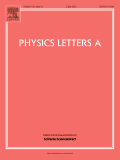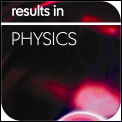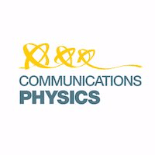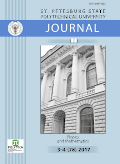
Journal of Physical Studies
Scope & Guideline
Unveiling New Dimensions in Physics and Astronomy
Introduction
Aims and Scopes
- Material Properties and Characterization:
Research focused on the physical properties of materials, including elastic, acoustic, and thermal properties, as well as the effects of various conditions (e.g., temperature, pressure) on these properties. - Quantum Mechanics and Theoretical Physics:
Exploration of quantum systems, including studies on quantum states, entanglement, and quantum mechanics applications in various fields such as materials science and astrophysics. - Nanotechnology and Nanomaterials:
Investigation into the properties and applications of nanostructured materials, including carbon nanotubes and metal oxides, with an emphasis on their unique physical and chemical characteristics. - Astrophysics and Cosmology:
Research articles exploring cosmic phenomena, dark matter interactions, and the behavior of materials in extreme astrophysical conditions. - Computational and Theoretical Modeling:
Development and application of computational techniques and theoretical models to simulate physical phenomena, including molecular dynamics and Monte Carlo methods. - Applied Physics and Engineering:
Studies that bridge theoretical physics with practical applications, particularly in electronics, photonics, and materials engineering.
Trending and Emerging
- Machine Learning Applications in Physics:
An increasing number of papers are utilizing machine learning techniques for data analysis and modeling within physical systems, indicating a trend towards integrating artificial intelligence in experimental and theoretical physics. - Nanomaterials and Their Applications:
Research on nanomaterials, including their synthesis, properties, and applications in fields such as sensing and photonics, is gaining traction, reflecting the growing importance of nanotechnology in modern physics. - Quantum Computing and Information:
There is a notable rise in studies focusing on quantum computing, quantum states, and quantum information theory, highlighting the relevance of quantum technologies in various applications. - Complex Systems and Disorder:
Emerging interest in the study of complex systems, particularly those exhibiting disorder and non-linear dynamics, indicates a shift towards understanding the behavior of systems under varying degrees of complexity. - Environmental Physics and Photocatalysis:
Research on photocatalytic materials and their environmental applications, such as degradation of pollutants, is trending, reflecting a broader societal focus on sustainability and environmental challenges.
Declining or Waning
- Classical Mechanics:
Research related to classical mechanics, particularly traditional problems and methodologies, has decreased. This shift may be attributed to a growing interest in quantum mechanics and advanced computational techniques that offer more innovative insights. - Thermodynamics in Isolation:
While thermodynamics remains a crucial topic, studies focusing solely on isolated thermodynamic systems without considering modern applications or interdisciplinary approaches seem to be less frequent. - Traditional Material Science:
Topics centered on conventional material science, such as basic studies of metals and alloys without the incorporation of nanotechnology or advanced characterization techniques, appear to be waning. - Astrophysical Phenomena without Quantum Considerations:
Research on astrophysical phenomena that does not integrate quantum mechanics or advanced theoretical frameworks is becoming less common, reflecting a shift toward more complex analyses that consider quantum effects.
Similar Journals

ACTA PHYSICA SINICA
Exploring New Dimensions in Physics ResearchACTA PHYSICA SINICA is a prominent journal published by the Chinese Physical Society, dedicated to the dissemination of groundbreaking research in the field of physics and astronomy. Established in 1993, this journal has consistently contributed to the scientific community by publishing high-quality articles that cover a wide range of topics within general physics and related disciplines. Although currently classified in Q4 of the physics and astronomy category by Scopus, ACTA PHYSICA SINICA plays an important role in fostering collaboration and communication among researchers in China and around the world. With a substantial readership, this journal is poised to remain a valuable resource for professionals, researchers, and students alike. By providing in-depth analysis and insights, it aims to advance the understanding and application of physical principles in various technological and scientific advancements. The journal is accessible via subscription, ensuring that contributors and readers can engage with the evolving landscape of physics research. For more information, visit the publisher's website.

PHYSICS LETTERS A
Advancing the Frontiers of Physics ResearchPhysics Letters A is a renowned scientific journal published by Elsevier, dedicated to the field of physics and astronomy. Established in 1963, it has continuously evolved, offering a platform for the swift dissemination of significant research findings in various branches of physics. As of 2023, it holds a commendable Q2 ranking in the category of Physics and Astronomy (miscellaneous) and ranks 69th out of 243 journals in the same domain according to Scopus, positioning itself in the 71st percentile of academic impact. With its comprehensive scope, Physics Letters A provides a vital resource for researchers, professionals, and students, facilitating academic discourse and advancing knowledge across the field. Although it does not currently offer Open Access options, its rigorous peer-review process ensures high-quality content. It is centrally located in Amsterdam, Netherlands, and continues to be an essential outlet for innovative contributions to the physics community through the year 2024 and beyond.

JOURNAL OF THE KOREAN PHYSICAL SOCIETY
Exploring New Horizons in Physics and AstronomyJOURNAL OF THE KOREAN PHYSICAL SOCIETY is a prominent academic journal dedicated to advancing the field of physics, published by the prestigious Korean Physical Society. With its extensive contribution to the scientific community since its inception in 1996, this journal serves as an essential platform for the dissemination of innovative research findings in various branches of physical science. Despite its current categorization in Q4 and a ranking reflecting its early-stage impact relative to peers, it remains a valuable resource for researchers, professionals, and students eager to explore developments in general physics and astronomy. The journal is accessible in both print and electronic formats, making it convenient for a global audience. Each issue aims to foster collaboration and knowledge-sharing within the field, ensuring that it remains relevant and instrumental in shaping future research directions. Located in South Korea, the journal continues to nurture a vibrant academic community, contributing to the ongoing dialogue in the global scientific arena.

INTERNATIONAL JOURNAL OF THEORETICAL PHYSICS
Pioneering Insights in Physics and MathematicsInternational Journal of Theoretical Physics is a premier academic journal dedicated to the advancement of knowledge in the fields of theoretical physics and mathematics. Published by Springer/Plenum Publishers, this esteemed journal has been a vital platform for researchers since its inception in 1968. With an impressive track record and an emphasis on high-quality, innovative research, the journal currently ranks in the third quartile (Q3) in both the Mathematics (Miscellaneous) and Physics and Astronomy (Miscellaneous) categories as of 2023. While the journal is not open access, it offers accessible subscription options for institutions and individuals. The International Journal of Theoretical Physics serves as an essential resource for scholars and practitioners looking to deepen their understanding and contribute to the evolving landscape of theoretical research, making it a key player in nurturing academic discourse and fostering collaboration in its field.

ACTA PHYSICA POLONICA A
Pioneering Insights in the Evolving World of PhysicsACTA PHYSICA POLONICA A is a distinguished peer-reviewed journal published by the Polish Academy of Sciences Institute of Physics, offering a platform for disseminating cutting-edge research in the field of physics and astronomy. With an ISSN of 0587-4246 and an E-ISSN of 1898-794X, this journal has been a staple for scholars since its inception, converging its publication years from 1996 to 2024. Despite its current Q4 classification in the Physics and Astronomy (miscellaneous) category, ACTA PHYSICA POLONICA A provides valuable insights and breakthroughs addressing various aspects of general physics. Researchers, professionals, and students will find a wealth of knowledge within its pages, even as it operates in an evolving academic landscape. While subscription options exist, the journal aims to foster collaboration and knowledge exchange in the physics community, making it a vital resource for those seeking to stay at the forefront of research advancements.

Results in Physics
Fostering Collaboration, Inspiring BreakthroughsResults in Physics, an esteemed open-access journal published by ELSEVIER, has been a prominent platform for disseminating cutting-edge research in the field of physics since its establishment in 2011. With its ISSN 2211-3797 and E-ISSN 2211-3797, this journal proudly holds a Q2 ranking in the Physics and Astronomy category for 2023, showcasing its significance and quality within the scientific community. With a remarkable Scopus rank of #28 out of 243 in the general physics and astronomy domain, placing it within the 88th percentile, Results in Physics serves as a vital resource for researchers, professionals, and students alike, fostering a collaborative environment for the advancement of knowledge across various subfields. The journal aims to provide a rapid and unrestricted access to innovative findings, encouraging open scientific dialogue and enhancing the visibility of breakthrough research. Located in the Netherlands at RADARWEG 29, 1043 NX AMSTERDAM, Results in Physics continues to uphold its commitment to excellence and accessibility in the ever-evolving landscape of physics research.

Communications Physics
Advancing the frontiers of Physics and Astronomy.Communications Physics is a premier open access journal published by Nature Portfolio, dedicated to disseminating high-quality research in the field of Physics and Astronomy. Since its inception in 2018, the journal has rapidly established itself as a vital platform for innovative scientific communication, boasting an impressive Impact Factor and achieving Q1 status in the 2023 category of Physics and Astronomy (miscellaneous). With a Scopus rank of #31 out of 243, placing it within the 87th percentile, Communications Physics attracts a global audience of researchers, professionals, and students eager to engage with cutting-edge findings. The journal supports open access, ensuring that research is freely available to the public, which enhances its visibility and encourages broader discussions within the scientific community. Located in Berlin, Germany, Communications Physics aims to bridge the gap between various disciplines within physics, fostering interdisciplinary collaboration and inspiring future research endeavors.

St Petersburg Polytechnic University Journal-Physics and Mathematics
Exploring New Frontiers in Physics and MathematicsSt Petersburg Polytechnic University Journal-Physics and Mathematics is a distinguished academic journal published by the Polytechnical University Publishing House, dedicated to advancing the fields of physics and mathematics. Established as an Open Access publication since 2013, this journal aims to facilitate the unrestricted dissemination of high-quality research, allowing global access to innovative findings and discussions. With its ISSN 2405-7223, the journal serves as a pivotal platform for researchers, professionals, and students keen on exploring the latest advancements and theoretical insights within these disciplines. The journal emphasizes rigorous peer-reviewed articles, promoting critical discourse and collaboration within the scientific community. By prioritizing open access, it enhances academic engagement and supports the ongoing development of knowledge crucial for addressing contemporary scientific challenges.

DOKLADY PHYSICS
Fostering Knowledge in the Realm of Physical Sciences.DOKLADY PHYSICS is a prominent academic journal dedicated to advancing knowledge in the fields of computational mechanics, mechanics of materials, and general physics and astronomy. Published by MAIK NAUKA/INTERPERIODICA/SPRINGER, this journal has established itself as a crucial resource for researchers and professionals keen on exploring the intricacies of physical phenomena and engineering applications. With its ISSN 1028-3358 and E-ISSN 1562-6903, DOKLADY PHYSICS has been contributing to scientific discourse since its inception in 1996 and continues to provide a platform for innovative research up to 2023. Despite its current Q3 ranking in several key categories, the journal maintains an inclusive approach, striving to influence both academic and practical aspects of its fields. While the journal may not be open access, it remains a vital publication for those interested in high-quality research, as reflected in its Scopus ranking positions across various engineering and physics categories.

PHYSICAL REVIEW LETTERS
Delivering Swift Insights into Fundamental ResearchPhysical Review Letters, published by the American Physical Society, is a premier journal in the field of Physics and Astronomy renowned for its rapid dissemination of high-impact research findings. With a distinguished history dating back to 1958 and an impressive ranking of #13 out of 243 in the general physics category, it stands proudly within the Q1 quartile, placing it in the top 6% of journals in its field. The journal focuses on brief reports of significant fundamental research across all areas of physics, making it an essential resource for researchers, professionals, and students seeking to stay at the forefront of developments in their field. Although Physical Review Letters does not offer open access options, its rigorous peer-review process ensures a high standard of quality and relevance in its published articles. With an unwavering commitment to advancing the understanding of physical science, this journal is indispensable for those looking to make a genuine impact in their research endeavors.